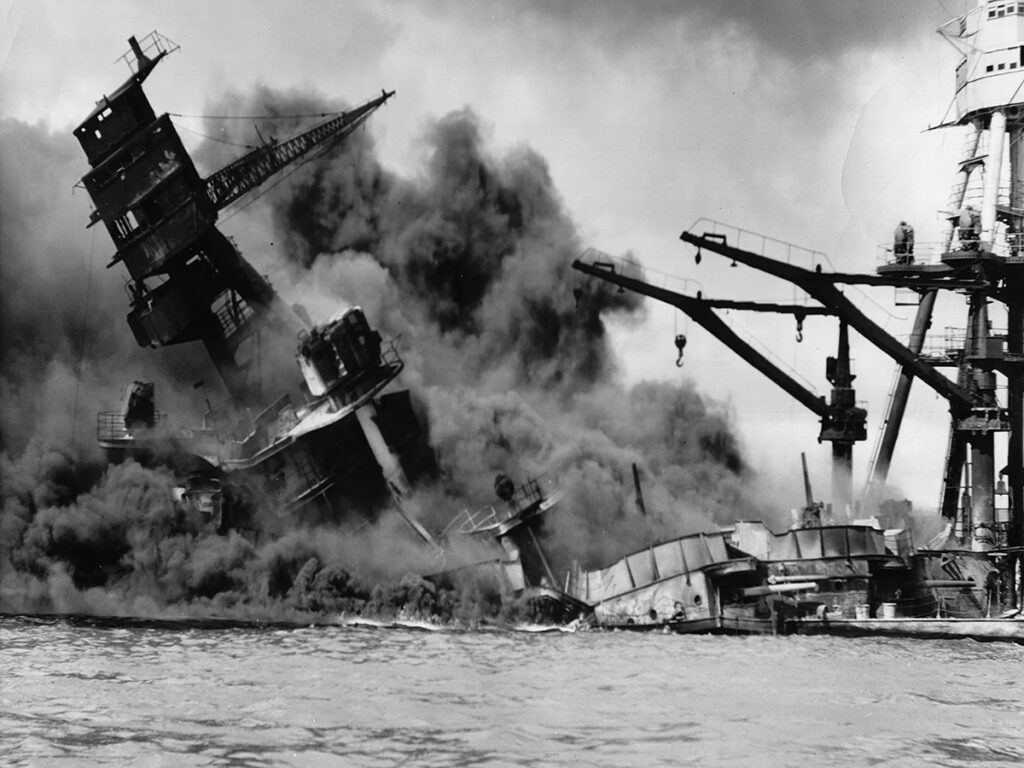In a historic assault that reshaped World War II and a modern parallel drawing global attention, the surprise attacks on Pearl Harbor and Russia’s air bases highlight the strategic audacity of pre-emptive strikes.
Oahu, Hawaii, and Murmansk, Russia: On December 7, 1941, Japanese Admiral Isoroku Yamamoto orchestrated a devastating surprise attack on the US Pacific Fleet at Pearl Harbor, Hawaii, aiming to cripple American naval power and secure Japan’s dominance in Asia. Over eight decades later, Ukraine’s audacious drone strikes on Russian air bases, dubbed the “modern Pearl Harbor” by Russian media, mirror this bold strategy, destroying over 30% of Russia’s strategic bomber fleet and potentially altering the course of the Russia-Ukraine war.
Yamamoto’s Calculated Gamble
Admiral Isoroku Yamamoto, a Harvard-educated strategist and compulsive poker player, devised the Pearl Harbor attack as a high-stakes bet to delay US intervention in Japan’s Pacific conquests. According to historian Seymour Morris Jr., Yamamoto’s time at Harvard from 1919 to 1921 revealed his risk-taking nature. “He became a fanatical poker player, staying up all night, winning hand after hand,” Morris noted, adding that Yamamoto hitchhiked across America to study its culture and terrain. As a naval attaché in Washington, DC, his poker games with US military officers fueled his confidence in outsmarting American counterparts. On December 7, 1941, over 180 Japanese warplanes from six aircraft carriers struck Pearl Harbor in a meticulously planned assault. The first wave, from 7:55 am to 8:45 am, targeted moored US battleships, sinking eight, including the USS Arizona, where a 1,760-pound bomb killed 1,177 sailors. A second wave of 160 warplanes hit remaining vessels and airfields, leaving 2,403 dead, 1,178 wounded, and 188 US aircraft destroyed.
Geopolitical Roots of Conflict
Japan’s 1941 attack stemmed from escalating tensions with the US over its expansionist ambitions in Asia. Engaged in a brutal war with China since 1937, Japan sought resources like oil and rubber to fuel its empire. The US, supporting China, imposed crippling sanctions, including an oil embargo, after Japan occupied Indochina in July 1941. Allied with Axis powers Germany and Italy, Japan faced severed US trade ties, pushing Yamamoto to plan a pre-emptive strike to neutralize the Pacific Fleet. Despite US intelligence suspecting conflict, an Army radar operator mistook incoming Japanese planes for expected US B-17s, leaving Pearl Harbor unprepared. The attack propelled the US into World War II on December 8, 1941, with Germany and Italy declaring war on the US days later, cementing America’s role as a global power.
Ukraine’s “Modern Pearl Harbor”
On June 1, 2025, Ukraine executed Operation Spider’s Web, a covert drone assault targeting Russian air bases in Olenya, Murmansk, and Irkutsk, Siberia, 4,000–6,000 km apart. Ukrainian President Volodymyr Zelenskyy revealed the operation took over 18 months to plan, destroying 41 Russian strategic bombers, including Tu-95s, Tu-22s, and A-50 radar planes, some capable of carrying nuclear weapons. Russian media likened the strike to Pearl Harbor for its surprise and impact, with pro-Kremlin bloggers estimating a loss of over 30% of Russia’s bomber fleet. The attack followed Russian missile strikes on Kyiv, reportedly in retaliation for an attempt on President Vladimir Putin’s plane, escalating the Russia-Ukraine conflict amid stalled ceasefire talks.
Strategic Parallels and Global Impact
Both Pearl Harbor and Ukraine’s drone strikes reflect the power of surprise in warfare. Yamamoto’s attack aimed to force US negotiations but instead unified American resolve, leading to its emergence as a superpower. Similarly, Ukraine’s operation could weaken Russia’s air capabilities, potentially shifting the war’s trajectory. Military analyst Dr. Elena Petrova noted, “Ukraine’s strike demonstrates how advanced drone technology can replicate the shock value of historic assaults like Pearl Harbor, leveling the playing field against a stronger opponent.” The Pearl Harbor attack cost Japan dearly in the long run, as the US mobilized its industrial might. Experts suggest Russia may now face similar pressure to rebuild its air force amid ongoing sanctions and economic strain.
Lessons from History
Yamamoto’s poker-inspired strategy underestimated US resilience, a miscalculation echoed in modern conflicts where initial victories may provoke stronger retaliation. The US Navy recovered swiftly post-Pearl Harbor, winning key battles like Midway in 1942. Ukraine’s drone success, while a tactical triumph, risks escalating Russian aggression, with analysts warning of potential nuclear rhetoric. As historian John Keegan wrote, “Surprise attacks often awaken sleeping giants,” a lesson resonating in both 1941 and 2025.


